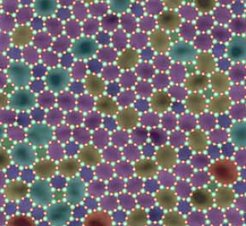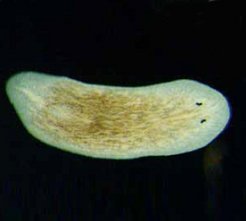Research highlights 2014
The Yearbook 2014 focuses on research reports of the Max Planck Institutes, showcasing the wide range of their research topics and projects. Here is a selection of three articles to illustrate the variety of research being carried out. You can read the full articles by clicking on the links in the text.

Window on glass
What could possibly remain to be researched about glass, one of humanity’s oldest materials? Quite a lot, in fact, as until now the amorphous structure of glass was not really well understood. Whereas it has been relatively easy since the early 20th century to analyse the structure of crystalline substances by bombarding them with x-rays, this has not been possible with irregularly structured solids, such as glass. Markus Heyde and Shamil Shaikhutdinov from Hans-Joachim Freund’s department at the Fritz Haber Institute began their measurements by manufacturing glass in two dimensions. They prepared ultrathin layers of glass on a metal substrate and investigated the structure of the amorphous layer at atomic-level resolution using a scanning probe microscope. In doing so, the researchers confirmed a theory proposed by the physicist William Zachariasen already eighty years ago.
Lessons in regeneration - from the flatworm

The astonishing ability of planaria, a genus of fl atworms, to regenerate missing body parts is being investigated by Kerstin Bartscherer. Even a tiny fragment of the fl atworm’s tail can grow into a new fully-formed organism. Kerstin Bartscherer uses planaria as a model system for studying the stem cells that make this phenomenon possible: distributed throughout the planarian’s body are cells called neoblasts, some of which are pluripotent, meaning that they can develop into any kind of cell. By analysing important proteins in the stem cells, the Münster-based scientists are trying to elucidate the underlying mechanisms. They have now determined that a protein known as nuclear receptor co-activator 5, or Ncoa5 for short, whose function in stem cells was previously unknown, plays an important role not only in preserving stem cells but also in regeneration. The possible role of Ncoa5 in mammalian stem cells is currently being researched.
Why are some children bookworms, others not?

Why are some children true bookworms, while others don’t like reading at all? Questions like these are the focus of the Max Planck Research Group “REaD” at the Max Planck Institute for Human Development. The researchers want to find out how to help children overcome reading deficits. Because reading, after all, is no child’s play, but a complex cognitive ability. To master such key skills, children need educational support. In their studies, the researchers discovered a positive relationship between reading behaviour and reading skill: if you read well, you also like reading. Based on their observations, the researchers favour individual training sessions for children who are slower readers to help them strengthen their “cognitive immune system”. After all, once children are able to read independently, no Harry Potter book will be safe from them!


